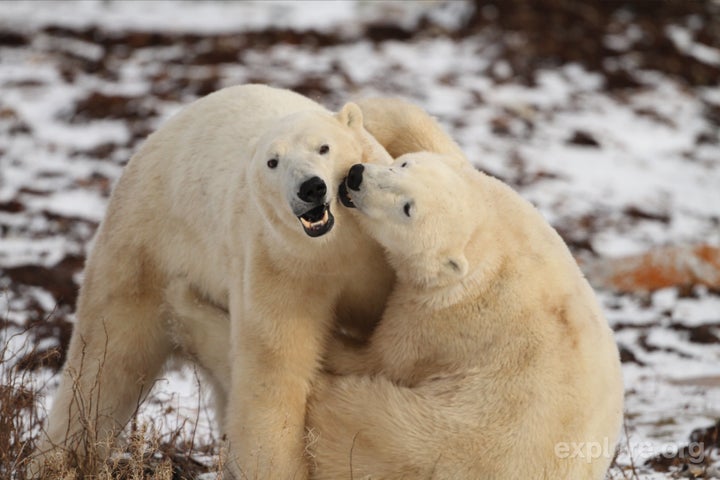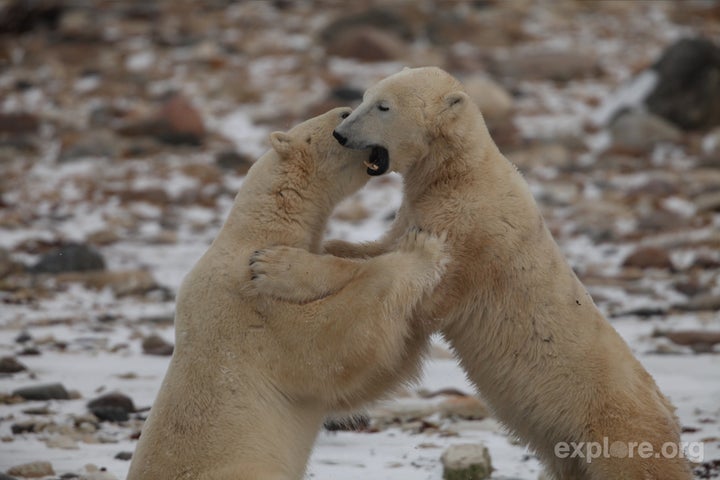This polar bear live stream may be the second-best way to safely get up close and personal with one of the world's most majestic creatures -- and see for yourself how much climate change is threatening the species.
To celebrate their fifth annual Polar Bear Week from Nov. 1-7, Explore.org, Frontiers North Adventures and Polar Bears International have set up a live stream tracking the world's southernmost polar bear population as it gathers along Churchill's Hudson Bay in Manitoba, Canada. After four to eight months of hibernation, the carnivores will wait there for the water to freeze over so they may cross it and hunt for seals.

Some action to look out for in the live stream includes the bears "sparring" or play-fighting, testing the ice, napping and spending time with their cubs.
While all of that is fun to witness on the live stream, Polar Bear Week also highlights the threats climate change poses for these animals. The waters they're waiting to cross, the live cam sponsors note, are especially susceptible to inconsistent sea ice formation as global temperatures rise.
"The Western Hudson population, home to Churchill’s bears, is now experiencing ice-free seasons that are three to four weeks longer than they were in the 1980s," Barbara Nielsen, director of communications at Polar Bears International, said in a statement sent to The Huffington Post. "As a result, their numbers have dropped by 22% compared with the 1980s."

Pinning down data on the world's bear populations, which number between 20,000 and 25,000, is difficult and expensive, PBI notes. Of the 19 populations, three are declining, six are stable, one is increasing and nine have insufficient data.
A study led by the U.S. Geological Survey in July warned that if greenhouse gas emissions are not reduced, "the number of bears across the vast majority of the Arctic ice cap will sharply fall 25 years sooner than if greenhouse gas rates peak in 2040 and then decline through the end of the century," Reuters reported.
"As the sea ice recedes and becomes thinner," Geoff York, senior director of Conservation at Polar Bears International, said in a statement to HuffPost, "we will have fewer polar bears in fewer places around the Arctic, making them much more vulnerable to other threats."

